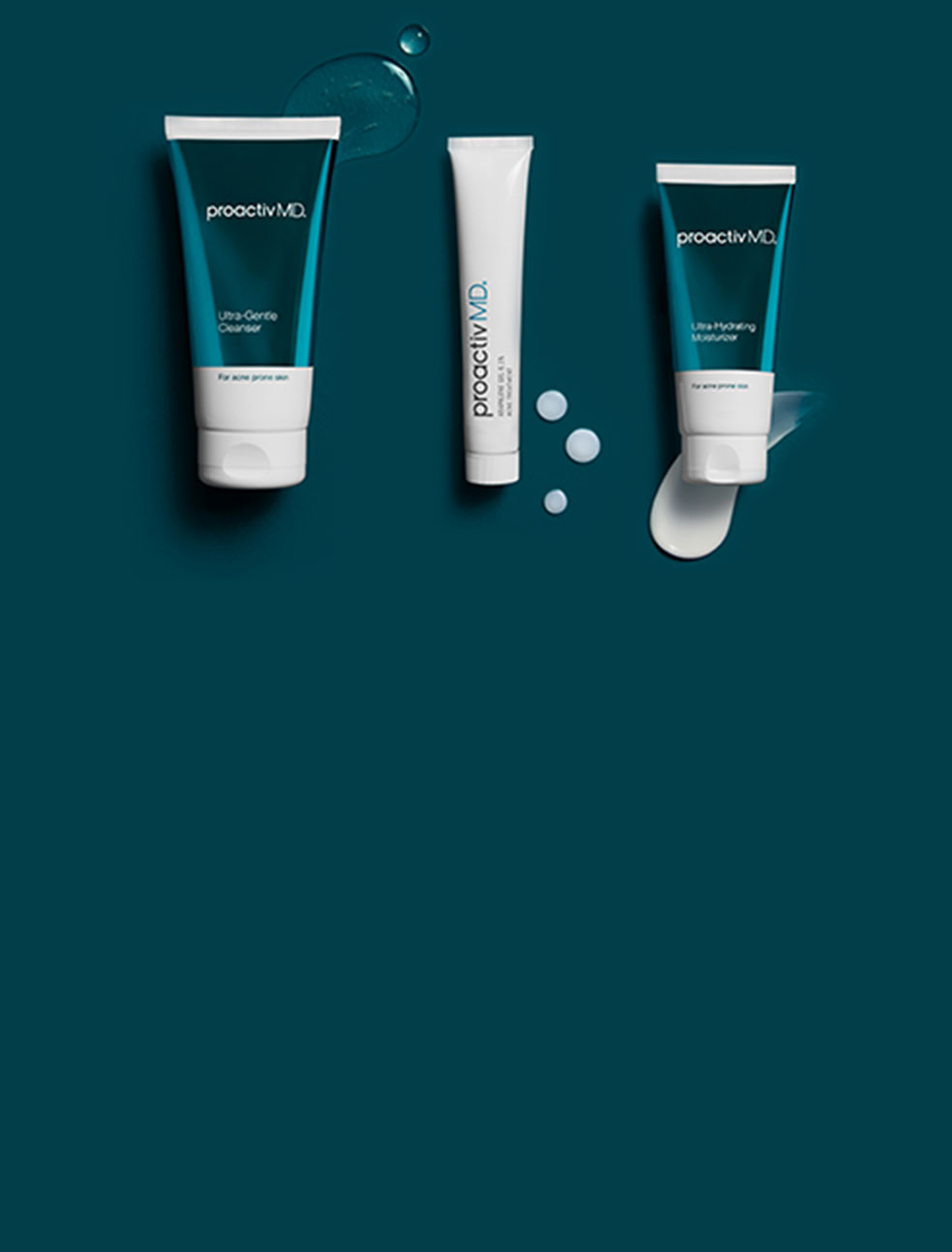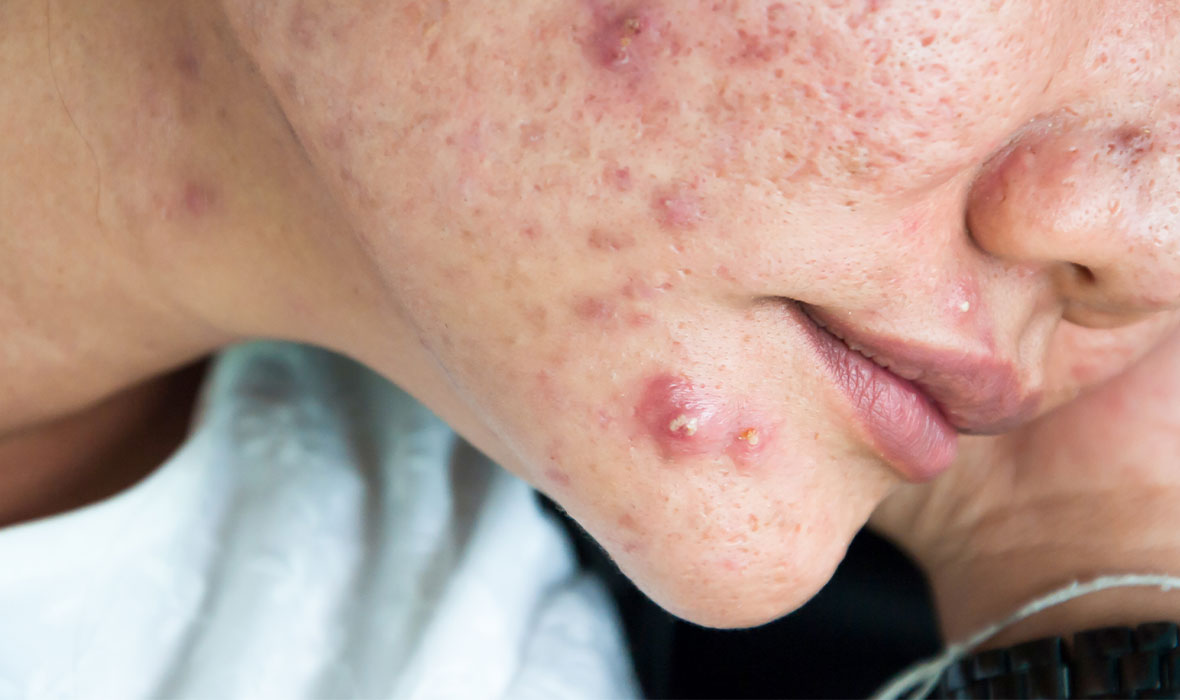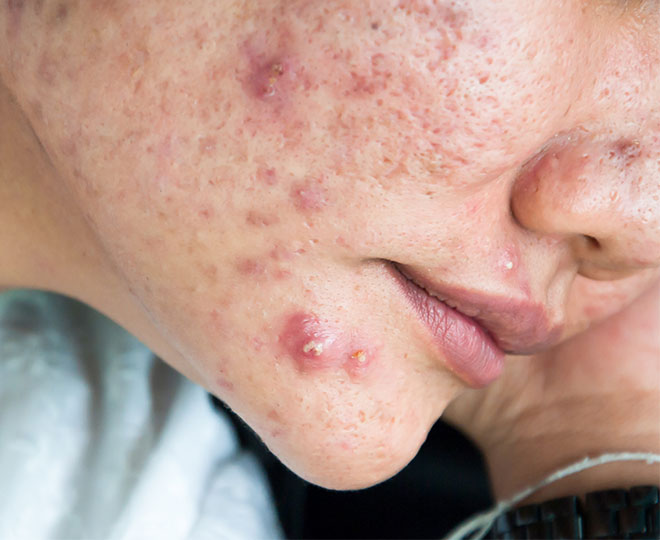If your pimples are deep, swollen, and painful to touch, they’re likely nodules and/or cysts, and you’re likely dealing with a more severe case of acne that may require professional treatment. Don’t freak out, though. Despite the severity of deep pimples like nodules and cysts, this type of acne can be treatable. With the right treatment plan and a good skincare routine, you’ll be tackling your acne before you know it.
That being said, if you’re curious about how to get rid of deep pimples, you’re definitely not alone. How long do deep pimples last? What causes deep pimples in the first place? We’ve got answers for you — read on as we take a deep dive into the topic. Plus, if you’re also wondering how to pop a deep pimple (please don’t), we’re answering that question, too.
What is a deep pimple?
To answer the ‘how to get rid of deep pimples’ question properly, let’s recap what acne is and understand what deep pimples really are.
As a reminder: acne is an inflammatory common skin condition that occurs when hair follicles (or pores) under the skin become clogged by excess sebum and dead skin cells. Acne is one of the most common skin disorders, and most people see breakouts on their face, but pimples can also appear on the back, shoulders, and chest.
Believe it or not, not all cases of acne are the same. Acne can appear in many different forms: whiteheads, blackheads, papules, pustules, nodules, and cysts. These various clogged pores and pimples have different sizes and characteristics and can be anywhere from mild to severe.
Whiteheads and blackheads are clogged pores, a milder type of acne, and in most cases can be cleared with over-the-counter products. The same applies to papules and pustules, although these types of red, inflamed pimples can be moderate in some instances. Nodules and cysts are deep pimples, and they fall into the severe category. Deep pimples are amongst the more troublesome type of acne — they develop deep within the skin, causing a red, swollen, and painful bump. How they form and how to get rid of deep pimples, ahead.
How are deep pimples formed?
Cystic and nodular acne, aka deep pimples, are larger than your average pimple. Believe it or not, deep pimples start off as clogged pores (blackheads and whiteheads). When p. acnes bacteria invades these clogged pores to munch on all the oil and dead skin cells inside, our bodies react to that invasion and send white blood cells to fight off the infection. That’s what causes that redness and inflammation, and the white pus you often see at the head of a pimple.
When that infection happens deep in your skin, it causes these red, painful pimples.
Why do some people get deep pimples? Acne (especially cystic acne) can be influenced by a variety of factors — hormones, stopping and starting birth control, and most importantly, genetics. That means if you have a family history of cystic acne, your risk of developing it is higher.
How to get rid of deep pimples
Over-the-counter topical medicines that work on milder acne often have little effect as nodular acne and cystic acne treatments. A dermatologist should be consulted.
What not to do with deep pimples
Yes, deep pimples can be frustrating, especially because of their large appearance. However, despite the looming temptation, you should never (ever!) pop, squeeze, or pick at them — this can seriously increase your risk for scarring and infection. You’ll want to be equally cautious about using home-remedies — things like toothpaste are not meant for pimples and can irritate the skin. Other natural, DIY remedies can inadvertently be irritating and are not how to get rid of deep pimples.
Other daily habits you’ll want to be mindful of? Wearing tight hats and headbands, using greasy creams and cosmetics, touching your face, and not washing your face or removing your makeup at night — these too can increase your risk of acne. Be sure to regularly wash or sanitize anything that’s touching your face — that goes for headphones, your phone, and your hands.
The bottom line
Unlike milder types of acne, deep pimples (nodular and cystic acne) can hurt and be challenging to treat. These pimples develop deep in the skin, causing a red, swollen, and painful bump as a result.
However, because nodular and cystic acne can be stubborn, seeing a dermatologist can be helpful. These professionals can prescribe topical and oral medications that can reduce swelling and prevent breakouts from occurring.
A good skincare routine is crucial and can definitely make a difference. Using gentle, alcohol-free formulas with acne-fighting active ingredients can help manage acne and prevent future breakouts.
At the same time, there are some things you should never do to get rid of deep pimples. Popping them, squeezing them, and picking at them, for instance, can make your deep pimples worse, while also increasing your risk for scarring and for new breakouts to show up. Similarly, you’ll also want to be mindful of your day-to-day habits — be mindful of anything that’s touching your face regularly (including your hands!) and use noncomedogenic makeup and skincare.
So now you know what causes deep pimples and how to get rid of deep pimples. And you may want to know how to pop a deep pimple, but the answer is: don’t! With some time, patience, and the right treatments, clear skin is in your future!

Try ProactivMD® — for inflamed, stubborn breakouts — featuring adapalene gel, our prescription-strength retinoid to help treat and prevent breakouts.
choose this routine
Try ProactivMD® — for inflamed, stubborn breakouts — featuring adapalene gel, our prescription-strength retinoid to help treat and prevent breakouts.

Try ProactivMD® — for inflamed, stubborn breakouts — featuring adapalene gel, our prescription-strength retinoid to help treat and prevent breakouts.
choose this routine
Try ProactivMD® — for inflamed, stubborn breakouts — featuring adapalene gel, our prescription-strength retinoid to help treat and prevent breakouts.






